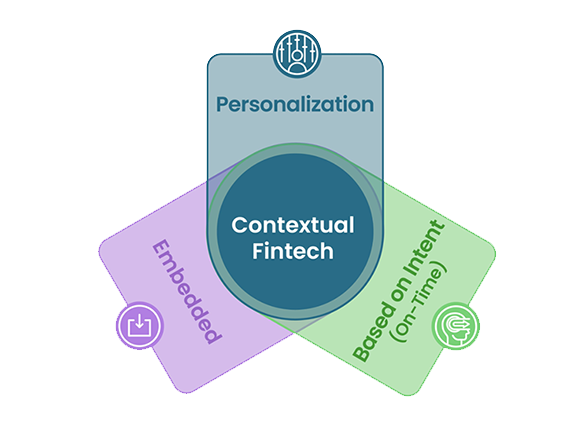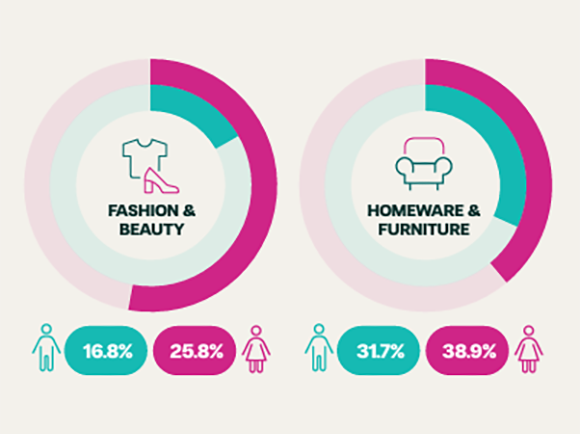How to increase your retail finance acceptance rate

To maximise your retail finance programme, you’ll need to target the right customers at the right price points, which means getting the right mix of payment products. You can do that with a multi-lender platform or a few well chosen providers. But how else? Matching your customers to plans based on their affordability helps to boost your retail finance acceptance rate while protecting your customer’s financial health. Can the same be said of other products?
The more of your customers that are offered finance, the more likely they are to convert. That’s why your retail finance acceptance rate is a key metric to track and one you’ll want to keep a close eye on.
In this article, we explain how to move the needle without risking your customer’s financial wellbeing.
What is the retail finance acceptance rate?
In retail finance, the acceptance rate is the proportion of credit applicants who are approved for finance by the lender, usually expressed as a percentage. For example, if 100 people apply for credit at your store and 75 of them are offered a loan agreement by the lender then your retail finance acceptance rate will be 75%. This differs from the ‘activation rate’, which is when a customer accepts the loan agreement they have been offered.
How high should my retail finance acceptance rate be?
Now, the higher your acceptance rate, the better your retail finance programme is working for you. But approving 100% of the people who apply for finance is not a sustainable strategy for your business. That’s because some customers apply for credit they cannot afford.
‘Subprime’ customers – those with patchy or poor credit history – are often charged a higher rate of interest because they are seen as less likely to repay their loan by the lender. But this type of lending can be seen as predatory; vulnerable customers often have nowhere else to turn. Taking on debt they cannot repay with high interest rates can cause their debt to spiral, which is not good for the customer, the lender, or you (the merchant).
You should therefore be wary of anyone claiming 90-100% acceptance/approval rates and instead look for providers who offer 60-85%. This represents a healthier, mature approach to credit.
That said, retail finance acceptance rates can vary dramatically. They depend on the lender, the customer and the type of finance products you offer. There are therefore a number of ways to boost your retail finance acceptance rates without putting your customers at risk.
How does the retail finance acceptance rate relate to the subsidy rate (transaction fee)?
The subsidy rate is the amount the lender charges the merchant for each transaction. It is essentially a transaction fee and typically ranges from 2-8% but can be as high as 15%. The subsidy rate will vary depending on how much the merchant subsidises the cost of credit to the consumer. Merchants are charged a full (higher) subsidy rate to offer interest-free credit to their customers, and a part (lower) subsidy rate if the customers are charged interest. The term length can also affect the subsidy rate – a longer term is a higher risk to the lender, so customers are charged interest, which can reduce the cost to the merchant.
Interest-free credit is therefore attractive to consumers but costly to you. The bigger your margins, the more you can afford to subsidise, which in theory means you could offer interest-free credit for as long as you wanted. However, there is a point where the subsidy rate becomes too high to make commercial sense. You need to balance subsidy rates with your margins.
You also need to ensure you’re offering finance to customers who are going to spend more using finance, or would not have bought anything without it. Converting a customer from a credit card (which would have cost you 2% in transaction fees) to retail finance (which costs you 8%) harms your business. Optimising your retail finance programme by advertising finance early in your customer journey, and setting minimum spend limits, can help to prevent cannibalisation.
Some lenders, like Duologi, factor acceptance rates into the subsidy of their loans. They will only offer loans to customers if the subsidy makes commercial sense.
How can I improve my retail finance acceptance rate?
There are a number of ways to do it:
1. Multi-lender platform
Finding the right lender for your business can be a challenge. There are generalist lenders and specialists; tier-one and sub-prime. A single lender platform with a good reputation can seem like a safe bet, but what if you don’t get the acceptance rates you were hoping for? Their risk appetite may be lower than you thought, or it might shift due to their own business challenges (lenders are more conservative in periods with high interest rates). Or maybe they’re simply not the right fit. An expert in electric vehicle (EV) finance will be better for your EV charging business than a lender who knows the gaming market well, after all.
A multi-lender platform solves these concerns by providing flexibility. You can choose the best lender for your business at the start of your retail finance journey, and rest assured that there are other options should things not work out, with no extra work. Split book lending also allows you to allocate one lender to, say, your EV charging and another lender to your boiler finance. This way you’re allocating the right lenders to the right products to maximise your retail finance acceptance rate.
2. Choose the right mix of finance products
Each flavour of finance caters for a different consumer need, which is often related to your price points and products. It’s your job as the retailer to pick the right mix. If you sell a range or products at different prices, you’ll want to choose a provider that can offer a suite of payment methods (multi-lender platforms are the best way to do this) or find a combination of providers that complement each other.
The most common retail finance products are:
Pay in 3/Pay in 4 (high acceptance rates, best for low value transactions)
Also known as Buy Now, Pay Later (BNPL) in the media (though strictly speaking this is incorrect – BNPL refers to a more specific product with a 12 month deferred payment period), Pay in 3/Pay in 4 products are what most people think of when they hear ‘retail finance’.
This (currently unregulated) form of credit allows consumers to spread their repayments over three or four instalments, often after an initial deposit. There are usually no fees unless a payment is missed, or a credit check. It’s best for small transactions around £500 or less to ensure the monthly repayments are manageable.
Short-term Interest-free Credit (STIFC) (high acceptance rates, best for higher value transactions)
Traditional retail finance, offered by regulated financial institutions. Consumers can spread a loan anywhere from £500 to £25,000 normally up to four years though this can be longer. It will depend on the merchant/lender agreement; a longer term often means a higher subsidy rate. Hard credit checks are standard.
Interest-bearing credit (lower acceptance rates, good for high value transactions)
STIFC without STF. Consumers can spread a loan of £500 to £25,000 up to ten years with interest. While more expensive to consumers, it’s cheaper for the merchant.
Pay in 30
A deferred interest-free payment, similar to invoice financing. The full balance is due after 30 days.
Interest-free options, like Pay in 3 and STIFC, have higher accept rates than interest-bearing because the loans are ‘free’ to the consumer. But you need to ensure your term lengths are matched to your customer’s affordability. A £1,800 piano split in three costs £600 today and then £600 in two weeks time, and again two weeks later. That’s too high a price point for most people. Those who are offered this finance can most likely afford to buy the piano without finance, which means lenders will not approve many loan applications. Your accept rates will be low as a result.
This is where STIFC comes in, but as discussed, you’ll need to balance your subsidy rate with your acceptance rate. STIFC will bring in more customers but cost you more per transaction. Getting the right mix is crucial.
3. Target the right customers
This goes without saying, but you’ll want to advertise your retail finance programme in the right places. A national TV ad, red-top newspaper or social media campaign may get you in front of a big group, but you’ll likely get applications from people who should not be applying for finance. So while your volume of applications will rise, your acceptance rates will decline.
Drill-down on your target market and go where they go.
4. Tailor finance plans to your customer’s affordability
Another sure fire way to boost your acceptance rates is to tailor your finance plans to your customer’s affordability.
Consumers often apply for credit that is just out of reach. They may set their deposit too low, or their term length too short, which makes their monthly repayments too high. Small adjustments – like a £20 reduction in monthly repayments – could be the difference between being accepted or rejected. The trouble is, they’re not told so they often don’t realise.
But new tools are helping to educate consumers. Finance Matcher – a Divido tool enabled by Novuna – uses advanced soft search to offer a suite of finance plans to your customers, matched to their affordability. Instead of being rejected for a plan they can’t quite manage, the customer is given finance options with higher deposits and longer term lengths.
This increases the retail finance acceptance rate, and the chances the customer will activate credit. All while encouraging responsible lending.
5. Waterfall lending
A great way to boost retail finance acceptance rates, with a caveat: your customer’s financial health may be at risk.
Waterfall lending is when a customer’s loan application is presented to a succession of lenders. The first lender offers the best deal, perhaps low or interest-free credit, but looks for ‘prime’ customers. Those with a strong credit history who pose little risk to the lender. If the customer does not match the affordability profile of the lender, the application is passed on to a second lender with slightly worse rates and a higher risk appetite. If this lender does not accept the customer’s application, the cycle continues. With each successive lender comes ever lower lending standards and increasing interest rates. The end result may be expensive interest on a loan for a customer who, by many standards, should not be offered credit.
This all happens in the background. The customer is only presented a loan agreement if they are accepted. They are otherwise unaware that this process is taking place.
Now, waterfall lending is not inherently bad practice. It can achieve the best results for customers, merchants and lenders. But only if the lenders are reputable and take a mature – not predatory – approach to lending. Near 100% acceptance rates would suggest otherwise.
How do I increase my retail finance acceptance rate?
Whether you’re just starting out or reviewing your options, Divido can help. Our multi-lender platform and dedicated team of Account Directors can help you to achieve the acceptance rates you need.
Become an expert in checkout finance
Our latest research uncovers the shopping habits of 4,000 consumers across Europe’s biggest markets. Learn how shoppers in France, Spain, Italy and Germany use checkout finance, where they spend their money, and how likely they are to use it again.
You might also
be interested in
Keen to know more?









